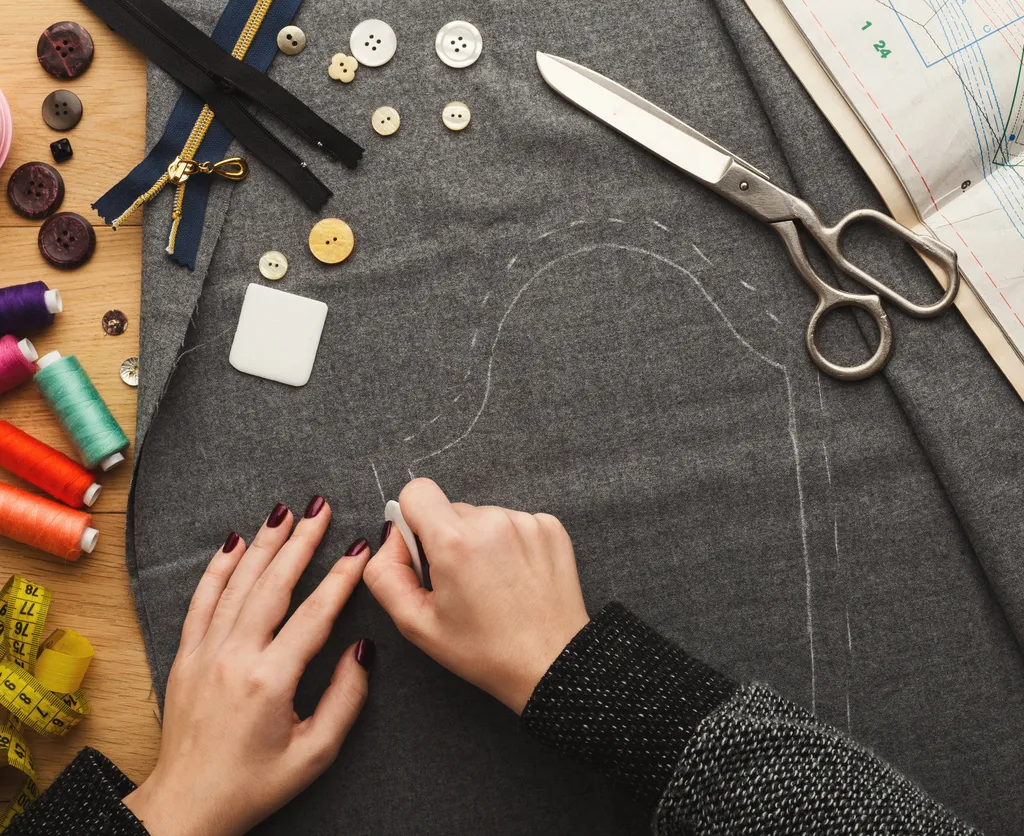Every crafter needs a sewing machine in their life! Whether you’re just starting out on your crafting journey or have been making for years, choosing the right sewing machine for you can make a world of difference.
Sewing machines aren’t just for dressmakers either – they’re useful for a huge range of creative practices. From sewing-related makes such as traditional quilts and modern embroidery projects, to embellishing or adding linings to your knitting and crochet projects, incorporating your cross-stitch designs into a project or even using in your cardmaking crafts – there’s so much potential.
However, it’s important to get the right machine for you! There’s a wide variety of sewing machines available, with a range of different price tags, so we’re here to help you find your must-buy machine.

Functions and accessories can vary massively between different sewing machines, so picking the wrong machine could mean you lack the ability to complete a certain project. As well as being potentially frustrating, the wrong decision could end up costing you too. You might splash out on an expensive machine that you barely use half the functions of, or alternatively you might go with a cheaper machine only to find it doesn’t quite meet your needs.
The best way to avoid disappointment is to know exactly what you’re looking for, so you’ve come to the right place. We’ve brought together advice from top craft professionals, technical editors, the leading UK craft magazines and Gathered’s own experts to create this complete guide to the best sewing machines for you!
Read on for our full sewing machine for beginners guide, or use these handy links to go directly to the section you’re looking for.
- Best sewing machines to buy in 2024
- How we tested
- How to choose the best sewing machine for you
- 3 quick checks for choosing good quality sewing machines
- 5 questions to gauge the best sewing machine for you
- How to use sewing machines: A brief overview
- How to set up your sewing machine
- Buying your first sewing machine
- Taking care of your sewing machine
- Where to put your sewing machine
- Why would I need a heavy-duty sewing machine?
- The best sewing machines for kids
- Why trust Gathered?
Best sewing machines to buy in 2024
If you just can't wait to get stitching, here's a list of the best sewing machines which always get a thumbs up from us! Want to dig a little deeper? Find more info on these machines as well as plenty more options in our pick of the best sewing machines for beginners!
1. Janome 5060 QDC
Best entry-level quilting machine

Key specs:
- RRP: £549 | $693
- Dimensions: 406 x 302 x 177mm
- Weight: 6.4kg
- Number of stitches: 200 stitch options including 9 buttonholes and 5 fonts
- Needle threader: Included
- Thread cutter: Auto thread cutter
- Hard cover: Included
The one-step buttonhole function, delivering six distinct types of buttonhole stitches, shines on the Janome 5060 QDC, perfect for dedicated dressmakers.
Complemented by essential feet like the zipper foot and blind hemming foot, it effortlessly handles various sewing tasks.
Its creative decorative stitches, featuring scissor and thread spool designs, add charm to craft projects, while the extension tables provide both compact storage and ample workspace for quilting or handling large fabric quantities.
Read our full review of the Janome 5060 QDC to see how it performed on test!
Pros: Clear, intuitive LCD display, useful one-touch button for thread cutter, lifting/lowering needle and start/stop, good choice of decorative stitches, lots of accessories and large extension table for quilting
Cons: Not enough storage space for accessories
2. Brother L14S Sewing Machine
Best value sewing machine
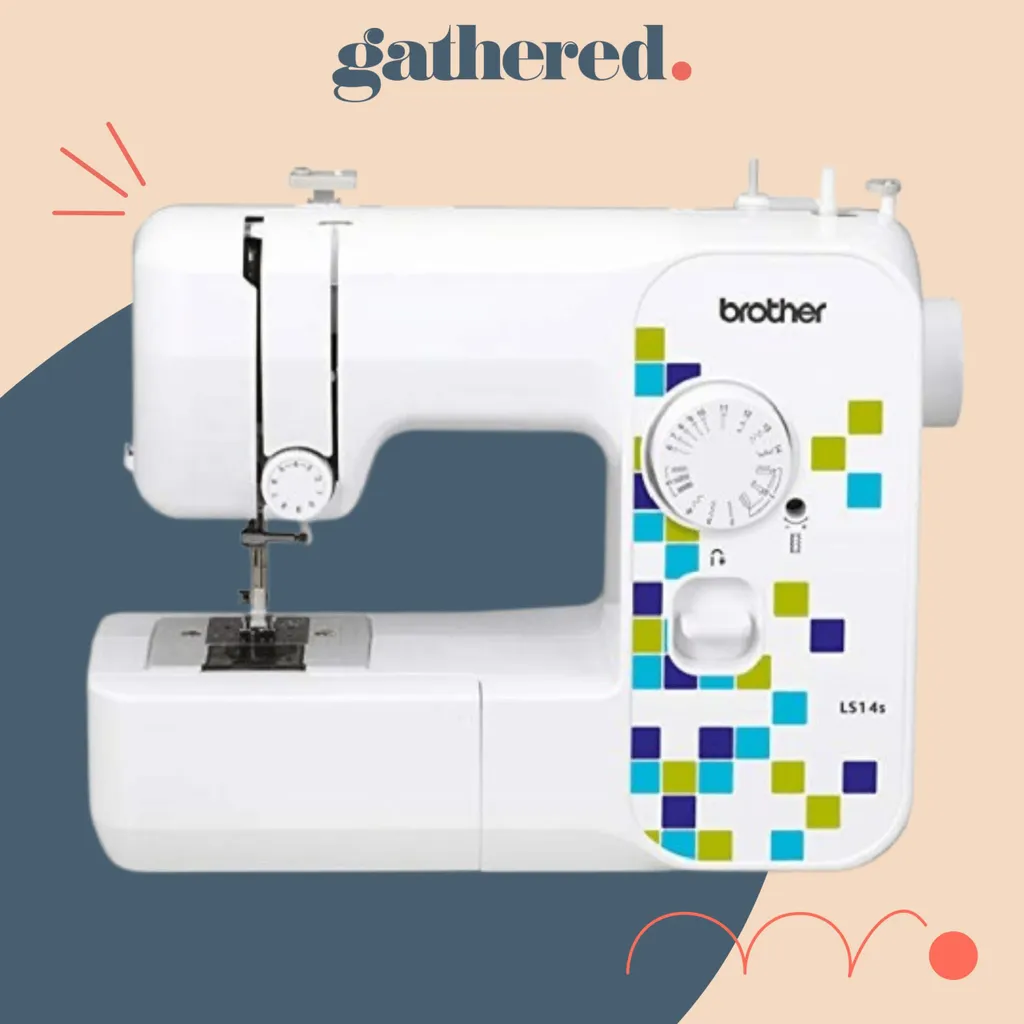
Key specs:
- RRP £115.00 | $146
- Dimensions: 355 x 445 x 190 mm
- Weight: 4.6kg
- Number of stitches: 14, including 3-step buttonhole
- Needle threader: Not included
- Thread cutter: Included
- Hard cover: Not included
The L14S sewing machine is a solid option for beginners. Featuring just the one dial, this model is straightforward to use. A great option for basic alterations, and at an affordable price, this sewing machine is a great starting point for those looking to start their sewing journey!
Its lightweight and portable nature makes it an appealing choice, especially if you don't have a designated sewing space and enjoy hopping from room to room.
This Brother sewing machine isn't too loud either, so you won't have to worry about disturbing your housemates.
Read our full review of the Brother L14s to see how it fared on test.
Pros: 3 year warranty, connected pedal and lead cable, push down spool holder (so it won't get lost!), backstitch is a handy level on the right-hand side, clear zip foot, handy thread cutter
Cons: No needle threader, can’t disable the dog teeth, no automatic foot release button, no speed control, doesn’t come with a cover
3. Janome 219-S Sewing Machine
Best for ease of use
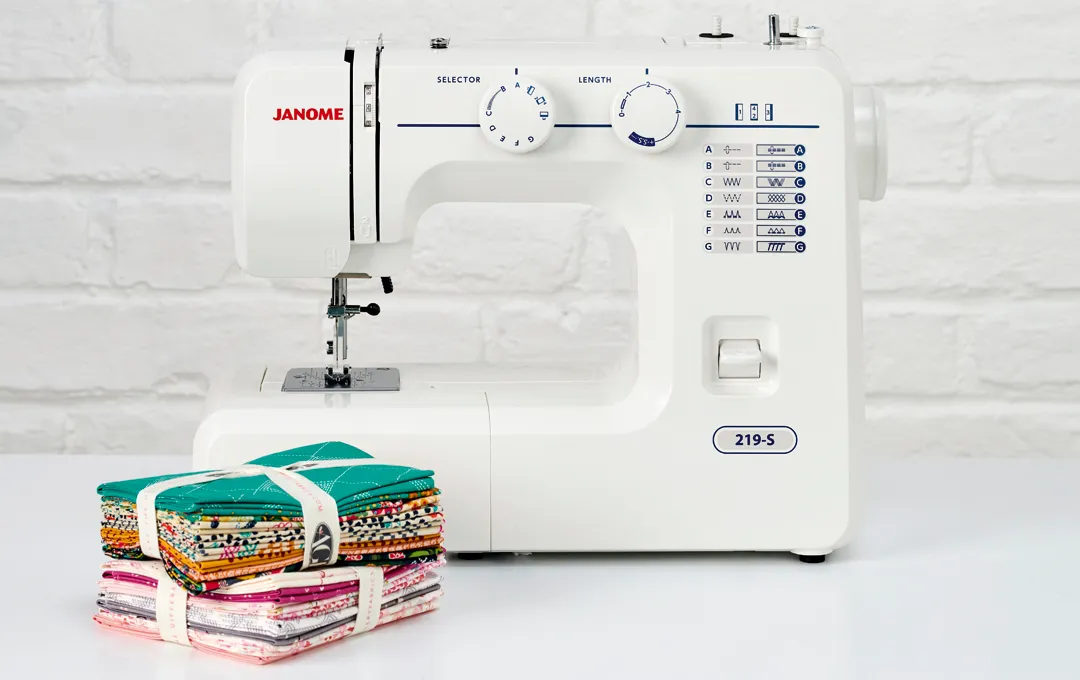
Key specs:
- RRP £129.00 | $163.75
- Dimensions: 390 x 150 x 295 mm
- Weight: 5.4kg
- Number of stitches: 14, including 4-step buttonhole
- Needle threader: Not included
- Thread cutter: Not included
- Hard cover: Not included
The Janome 219-S is a beginner-friendly sewing machine ideal for everyday projects, from alterations to basic dressmaking and quilt-making.
With 14 stitch options including a 4-step-button holer, it offers versatility without overwhelming complexity.
Portable and lightweight, it's perfect for sewists without a dedicated sewing area, though it lacks advanced features like feed dog lowering for freehand quilting.
We put this sewing machine to the test. Read the review of the Janome 219-S sewing machine.
Pros: Easy to thread and use, lightweight, great value for money, perfect for beginners
Cons: You can't lower the feed dogs, no needle-cutter, basic dust cover (no pocket)
4. Pfaff Smarter 160S Sewing Machine
Best stylish, quiet sewing machine
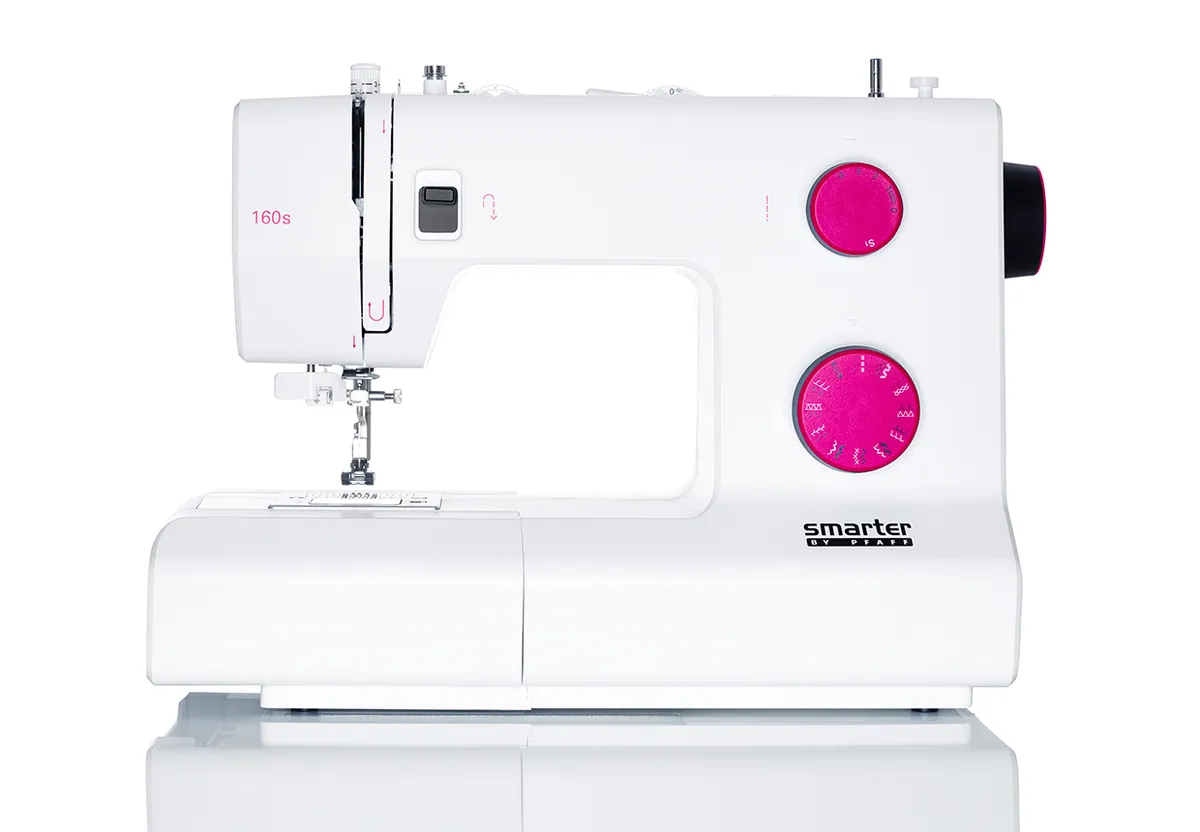
Key specs:
- RRP: £329.00 | $399
- Dimensions: 410 x 180 x 310 mm
- Weight: 7kg
- Number of stitches: 22, including 1-step buttonhole
- Needle threader: Included
- Thread cutter: Included
- Hard cover: Included
As well as a very stylish appearance that's sure to add a splash of colour to your sewing table, the Pfaff Smarter 160S sewing machine boasts 22 stitch settings and a built-in needle threader.
Another beginner-friendly option, this sewing machine features a dial for easy operation, and sews quickly. It's a fairly sturdy model, and comes with a hard carry case so you can protect your machine whilst on the move.
It's notably quiet in comparison to other sewing machines on the market, so it's a nice pick for sociable sewers!
For more on this model, read our review of the Pfaff Smarter 160S sewing machine.
Pros: Good quality, sturdy machine, hard case, stylish design, 22 stitch options, built-in needle threader & thread cutter, feed dogs can be lowered, quiet
Cons: Needle threading snagged a little, may be a little too simple for some
- Buy now in the US from SewingMachinesPlus ($349)
5. Janome 230D Sewing Machine
Best computerised sewing machine
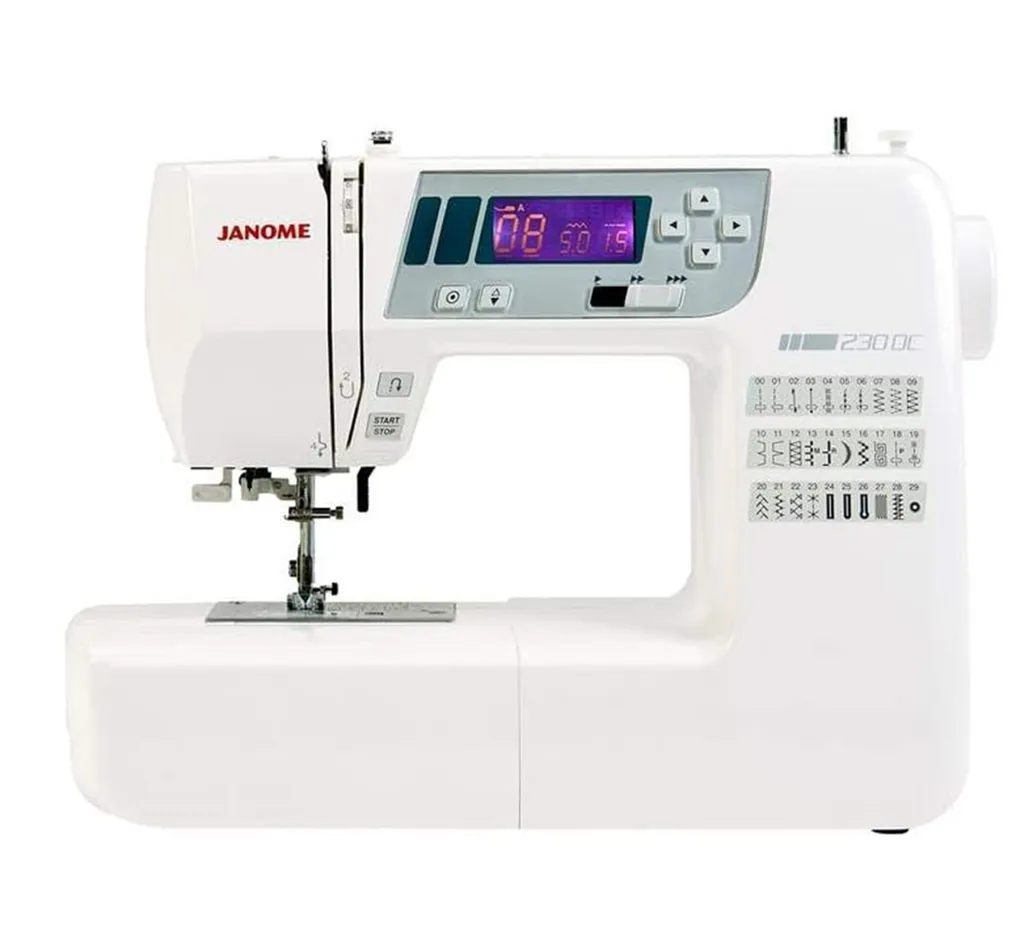
Key specs:
- RRP £439.00 | $599
- Dimensions: 410 x 310 x 170 mm
- Weight: 5.7kg
- Number of stitches: 30, including 1-step buttonhole
- Needle threader: Included
- Thread cutter: Included
- Hard cover: Included
You can choose between 30 stitch options with this computerised sewing machine, and its large screen and automatic needle threader make it a dream to use - super easy.
As this machine covers far more than the basics, it's on the more expensive side, however it's still suitable for beginners. Its durable, portable and reliable nature makes it a solid choice.
Find out more about this model in our review of the Janome 230D sewing machine.
Pros: Lightweight, three one-step buttonhole options, lots of extras included, speed control slider, hard cover
Cons: Quite noisy, small harp space
- Buy now in the US from Janome ($599)
6. Singer 4423 Sewing Machine
Best heavy duty sewing machine

Key specs:
- RRP £299.00 | $377.75
- Dimensions: 400 x 160 x 305 mm
- Weight: 6.4kg
- Number of stitches: 23, including 1-step buttonhole
- Needle threader: Included
- Thread cutter: Included
- Hard cover: Not included
For tougher materials and bigger projects, you may be in the market for a heavy duty sewing machine. As a reliable, well-loved and trusted brand, Singer is a safe go-to for heavy duty sewing machines. This is one of the brand's most iconic models, with features including an automatic needle threader, one-step buttonhole and automatic bobbin clutch.
Discover more heavy duty sewing machines in our handy buyer's guide.
Pros: Durable design, iconic model, versatile accessories and functions included, heavy duty construction.
Cons: Not as portable, noisy operation at high speeds or with thicker fabrics.
7. Janome Atelier 3
Best decorative stitches
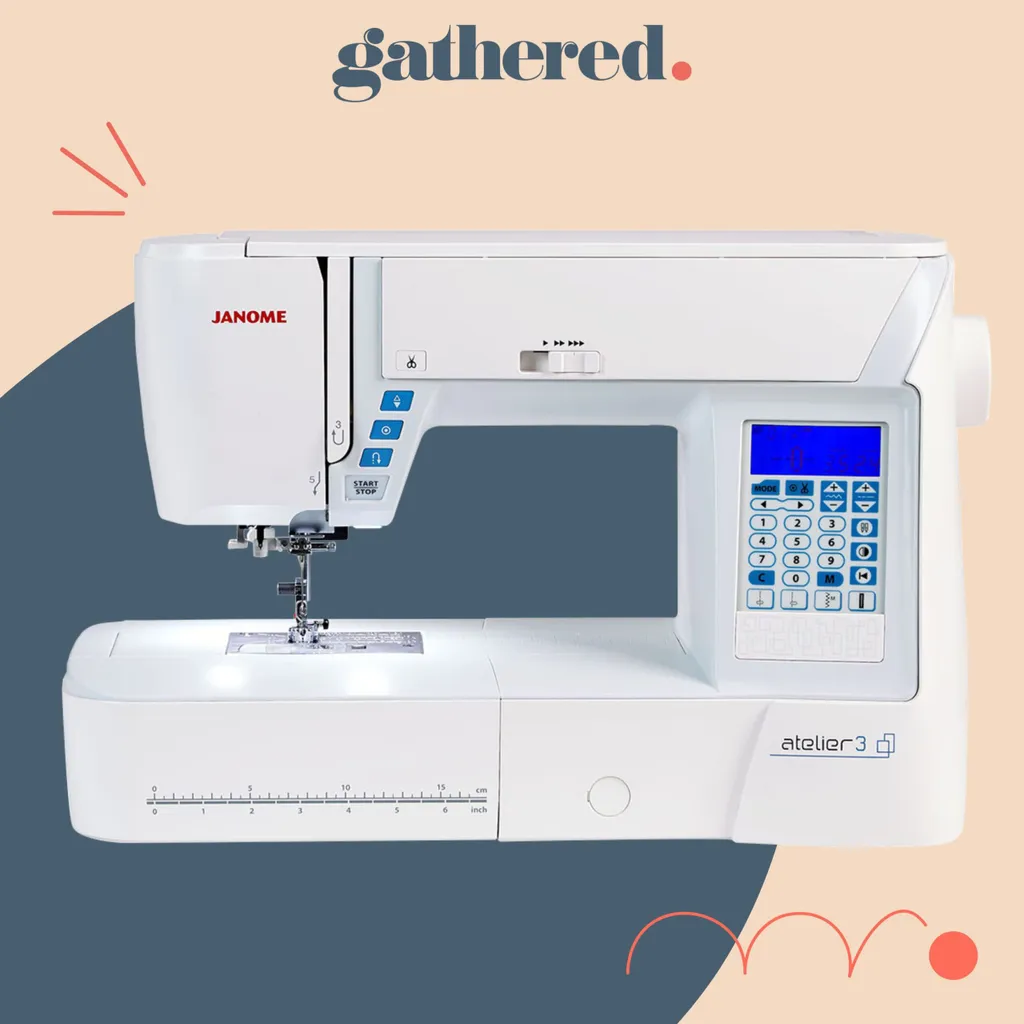
Key specs:
- RRP £949 | $1,199
- Dimensions: 510 x 330 x 250mm
- Weight: 10.2kg
- Number of stitches: 120, including 7 buttonholes, and alphabet
- Needle threader: Included
- Thread cutter: Included
- Hard cover: Not included
The Janome Atelier 3 is a versatile computerised sewing machine, offering 120 stitch options including alphabets for personalised designs and seven buttonhole stitch choices.
Its user-friendly design features a clear LCD display, convenient one-touch buttons, and easy setup with a drop-in bobbin and quick-release hook cover plate.
Though not highly portable, its comprehensive accessory set, memory function, and optional quilting kit make it an excellent choice for sewists seeking diverse functionality and ease of use.
Find out more about this model in our review of the Janome Atelier 3 sewing machine.
Pros: Intuitive LCD display, huge choice of stitches, clear reference guide, lots of measurement guides, useful one-touch button for thread cutter, lifting/lowering needle and start/stop
Cons: Only comes with a semi-rigid fabric cover, heavy, so not easily portable
- Buy now in the US from Walmart ($749), Joann ($749)
Everything you need to know!
Even if you’ve never even picked up a needle and thread before, you’ll find loads of helpful info in Gathered’s complete guide to sewing for beginners.
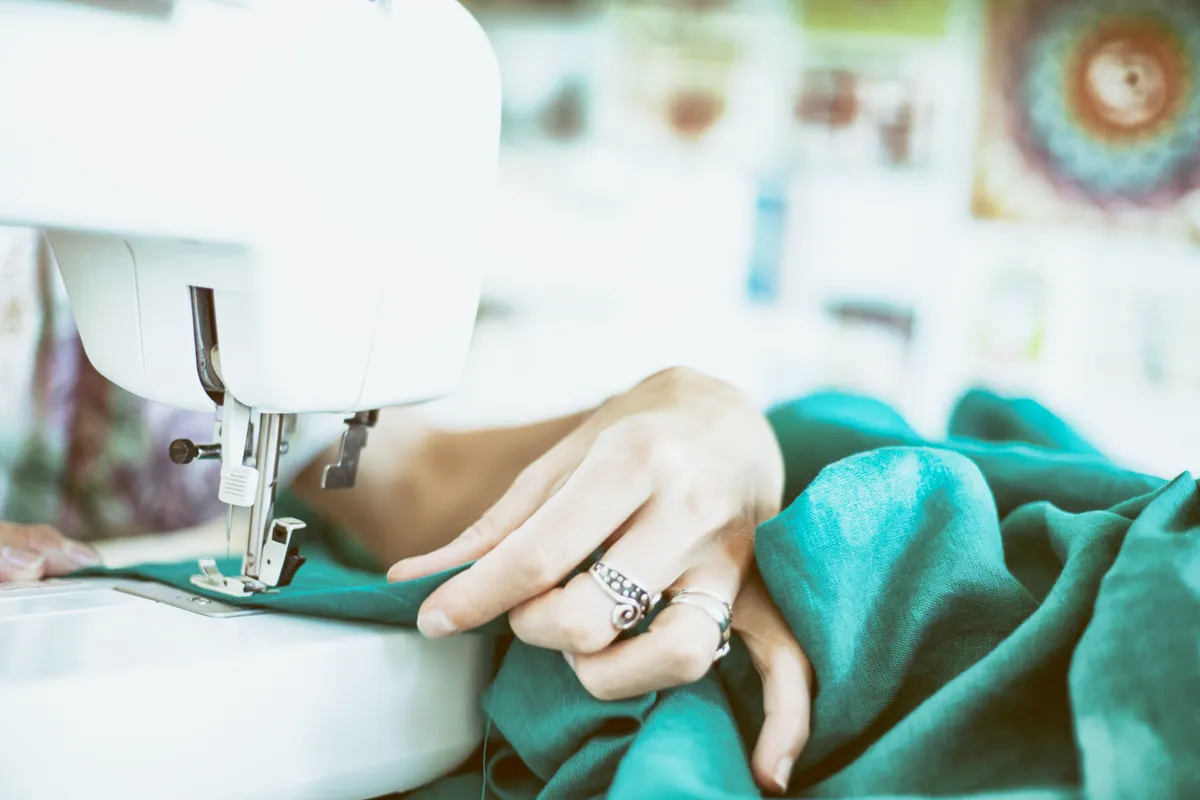
How we tested
We thoroughly tested the sewing machines' setup, accessory attachment, and stitching capabilities, exploring a range of fabrics - viscose to denim - to assess their performance across different materials and stitch options.
We considered overall appearance, portability, functionality, value for money, performance and ease of use, as well as noting any bonus specific features, to award each sewing machine a rating out of 5 stars.
How to choose the best sewing machine for you
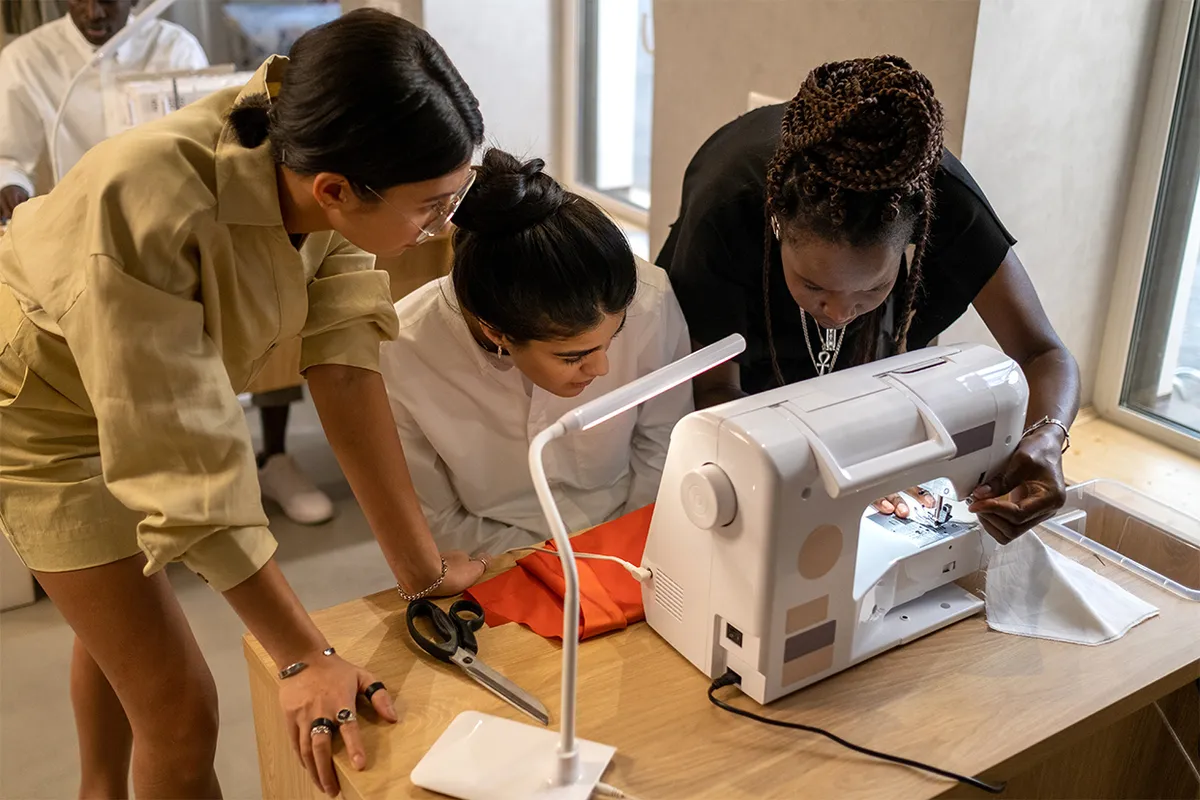
It can be tricky knowing where to start when choosing a new sewing machine, especially so if you’ve never owned one before. It is a bit of a balancing act, as you want to ensure you have enough features but not so many that it becomes confusing (or too costly).
The amount of features, brand and build quality all make a difference to the cost of a machine. But there are additional criteria to consider too, such as whether it’s able to sew through heavy duty fabrics or if it can do free motion embroidery.
It may be tempting to go for that machine that’s on sale, but the subtle variations between machines can make a big difference as to whether it helps your creativity flourish or stresses you out.
3 quick checks for choosing good quality sewing machines
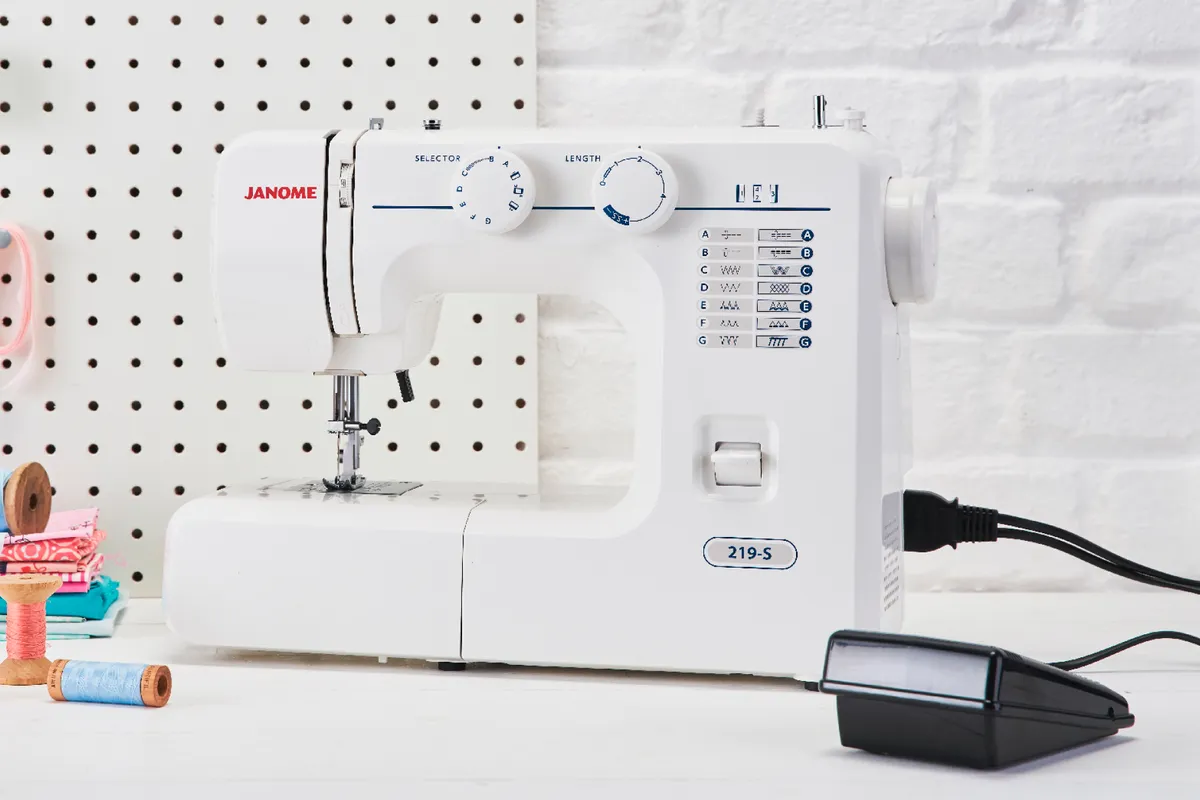
1. Pick a brand you trust
While there are many cheaper options of sewing machine available, it is definitely worth investing in a branded machine. Some of the larger brands have been going for over a hundred years, so have well and truly earned their reputation.
Branded machines are more likely to be well-designed and built with quality parts. They’re also more likely to include the most commonly used features.
In the event that you’re unhappy with your purchase, you also have the comfort that there will be support available – be it in the form of online tutorials to help you make the most of your machine or the customer support teams for if something goes wrong.
2. Look for top-loading, drop-in bobbins
Bobbins can be one of the trickier aspects of a sewing machine, especially if something goes wrong. There are two main types of bobbin loading options on sewing machines – front loading encased bobbins and top loading drop-in bobbins, with the latter definitely being the type we would recommend for beginners.
Front loading encased bobbins are generally used on cheaper machines, and while they are perfectly usable, you need to ensure you load them into the case correctly and you will normally need to remove a compartment to access them. They’re also very tricky to deal with if you get a tangle in your machine.
With a top loading bobbin machine however, you simply lift up the flap and pop the bobbin in – easy peasy. Plus, it’s a lot simpler to see how much thread you have left on your bobbin, and if you do have a tangle, it’s far easier to see where the problem is and rectify it.
3. Check for snap-on feet
When you start researching sewing machines, you‘ll notice that they come with a range of different feet. This is so that you can choose an appropriate foot for a specific stitch - for example, a zipper foot will have space to allow the needle to pass on each size of the zip.
Regardless of the amount of feet that your machine comes with, the way that they attach to the machine is important. The majority of machines come with snap-on feet which allow you to quickly switch between them. However, some machines do come with feet that are fixed in place with a screwdriver, which can be inconvenient and will interrupt your flow.
5 questions to gauge the best sewing machine for you

As well as looking for general features, there are also some criteria which will help you to determine whether the machine is best for your specific crafting needs.
1. Can it handle stretch stitches?
If you want to sew garments at any point in the future, you’ll need a machine that can handle stretchy fabrics. A simple zigzag stitch will let you do this as the stitches can stretch when the fabric does, but some machines will come with more options and variations for than others.
2. Does adjusting the base reveal the free arm?
Some machines come with a portion of the base that can be removed from the section below the needle mechanism/bottom bobbin. This is so that you can sew things like cuffs and sleeves which are already a circular loop of fabric. Sometimes the design of the machine may have a groove to allow this.
It can be difficult to tell from an image if this is a feature, as the accessories compartment which will be pictured is often the section which is removed, however it should include this detail in the product description.
3. How heavy is it?
The weight of a machine can be a very telling factor. If a machine is quite lightweight, it will shake and vibrate more, especially when you try to sew at speed. This can make straight lines of stitches trickier, so you’ll need to keep a closer eye on holding your fabric – and the vibrations will make your machine considerably noisier!
Smaller lightweight machines will also be trickier to use with larger projects such as quilts. However, if you plan on using your machine in different locations or taking it to a sewing class, then you need to ensure it’s not too heavy to carry.

4. How advanced do you need to go?
A simple machine will meet most people's needs to start off with, but if you’re planning on eventually moving on to dressmaking or quilting then you’ll need to consider a more advanced machine.
Quilting in particular uses machines that can fit universal quilting feet and can be adjusted to work with thicker materials and larger items. Similarly, if you want to make your own clothes you may find that simpler cheaper machines can’t sew through thicker fabrics or have the required feet required for making specific seams.
5. How loud is it?
No sewing machine is completely silent, but cheaper ones tend to be a lot louder than more expensive machines. This can become tiresome and annoying when working for any length of time (as well as disturbing others if you’re sewing in a shared space). Don’t be afraid to ask for a demonstration if you’re buying from a store, or alternatively try out a couple of friends' machines to see how loud they are.
If you’re buying online take the time to read the reviews – if a machine is particularly noisy, then you can almost guarantee someone will have mentioned it.
Now you know how to identify the basics check out Gathered’s roundup of the best sewing machines for beginners, or read on to learn more about how sewing machines work and really get to know your stuff!
How to use sewing machines: A brief overview
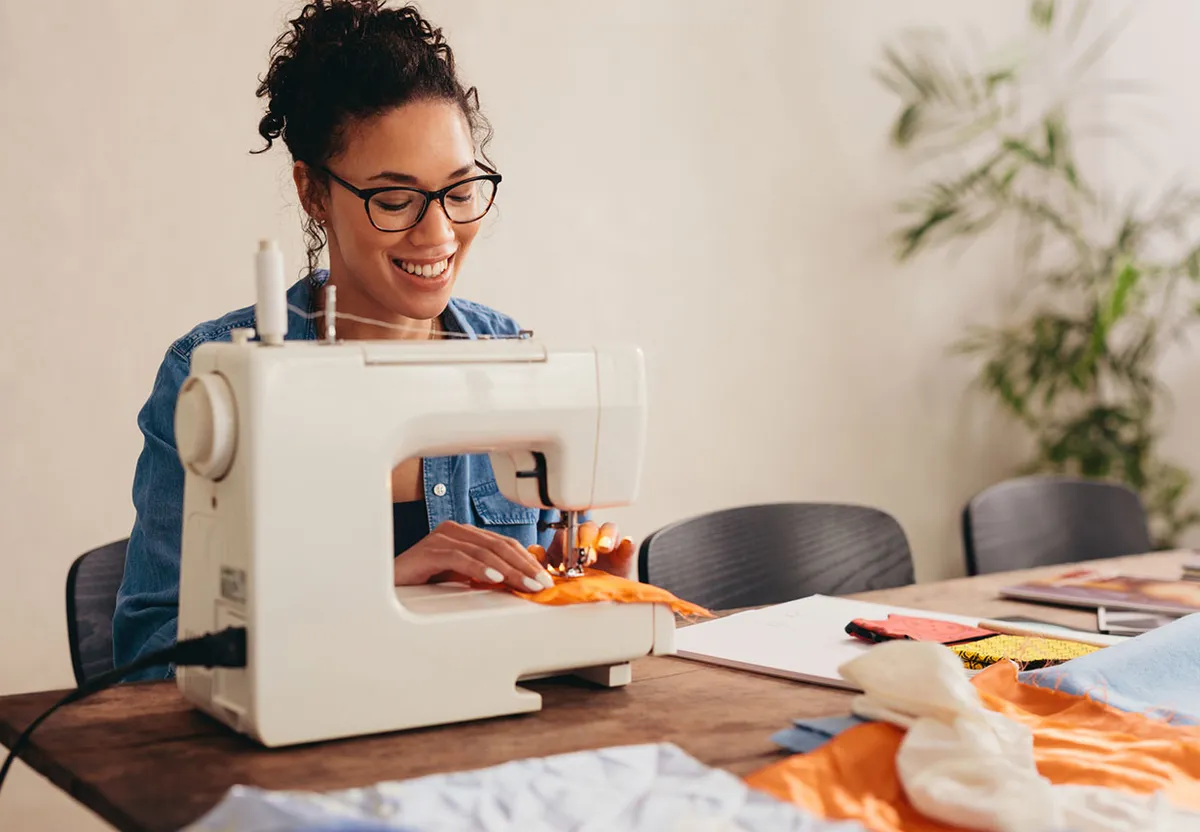
Anyone can learn how to use a sewing machine, in fact you can even teach yourself at home. Most sewing machines come with an in-depth manual that will include how to set up your machine as well as how to select the different stitches and troubleshoot problems.
While there are many different sewing machines available, they all have the same common features that we’ll quickly introduce you to, but you can find more detailed information in our How to use a sewing machine guide.
The needle
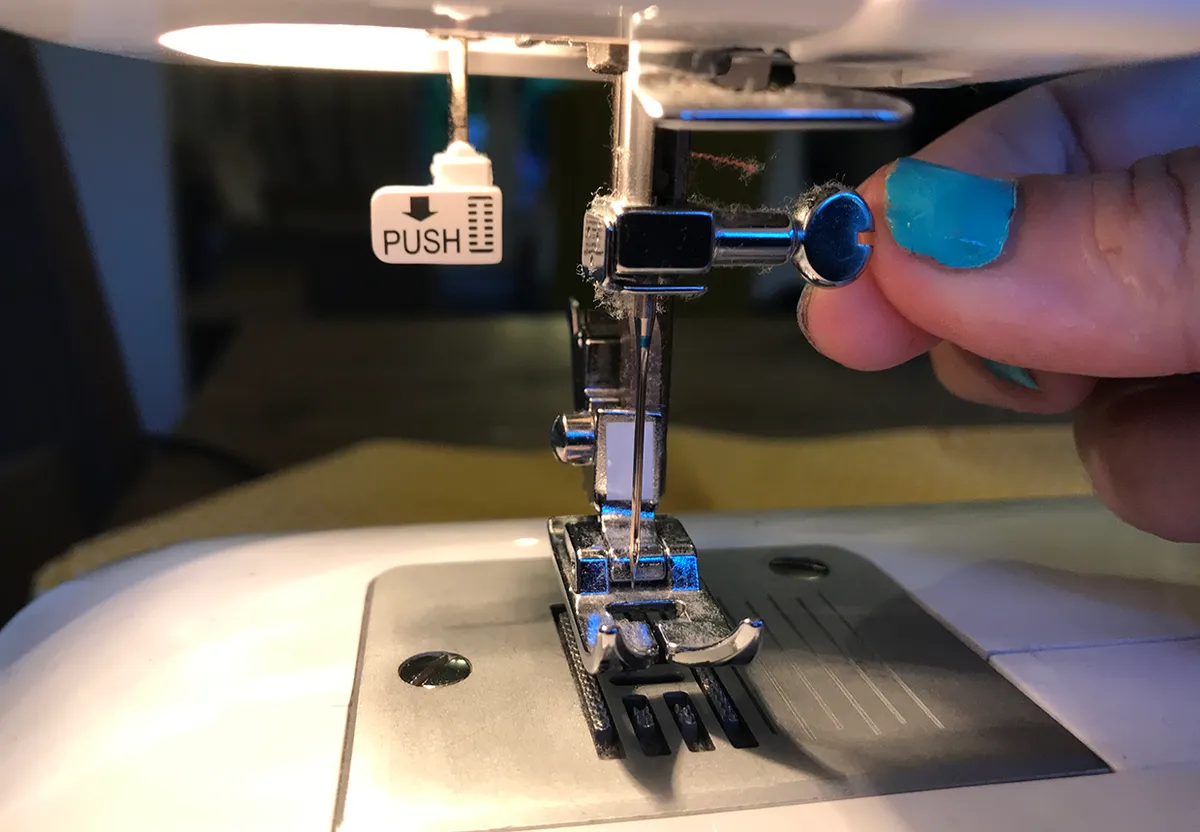
The sewing needle on your machine goes up and down, going in and out of the fabric, but not the whole way through as it would with an embroidery needle.
Needle sizes vary based on the thickness of fabric being used. Size 75 or 80 (UK sizing) is the standard size, with bigger numbers being used for thicker fabrics (e.g. 110 or 120 for denim or curtains) and smaller numbers for thinner fabrics (e.g. 60 for organza). Find out more in our know your needle sizes guide.
The sewing machine presser foot
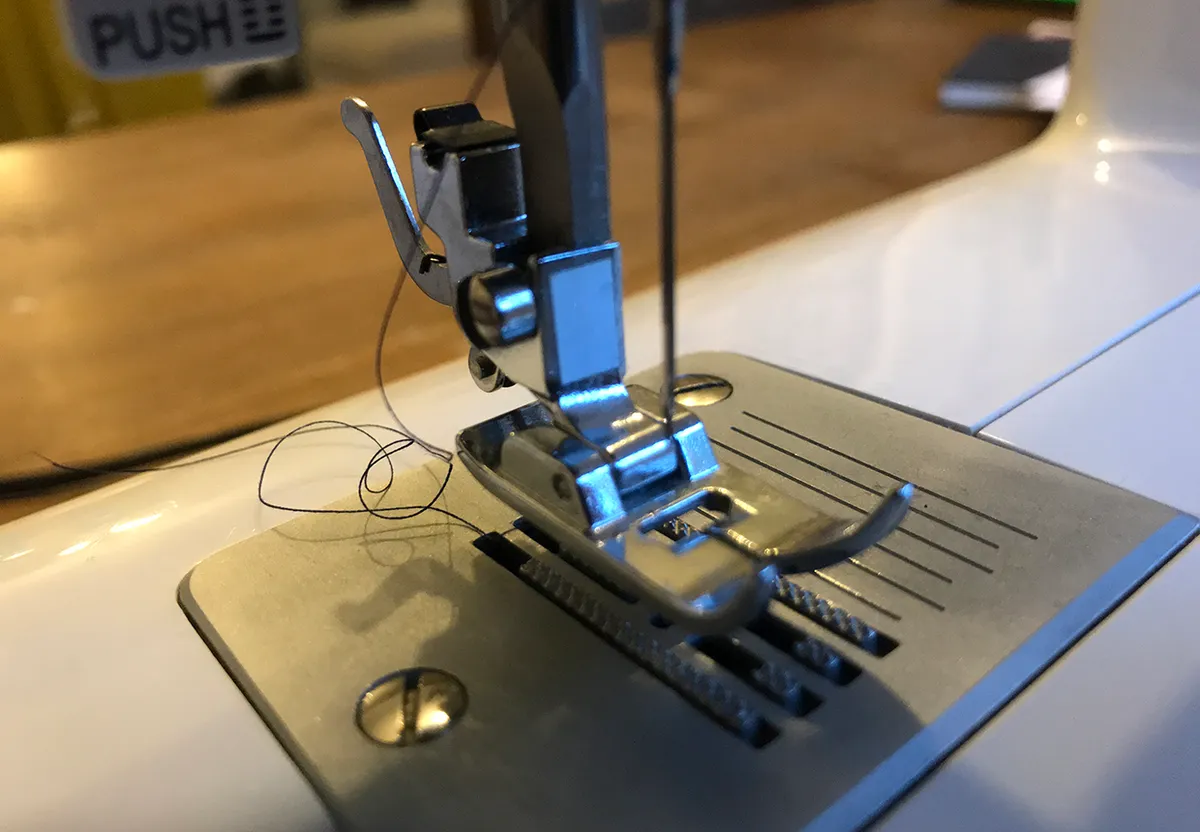
The presser foot is the small flat piece of metal that is positioned just below the tip of your needle and is used to keep your fabric in place as you sew. There will be a lever which you can use to move the foot up or down, normally positioned closely at the side or behind the needle mechanism. You use the lever to raise your foot (when the needle is also positioned in the up position) so that you can position your fabric, then lower it back down to secure your fabric in place when you start sewing.
You also use this lever to change feet – you raise the foot up and then there is a release clip to drop the foot, you can then lower the lever to ‘snap-on’ the different foot. Your machine will likely come with the basic presser foot installed which is the commonest foot used, but there are different specialist feet for sewing items such as zips or buttonholes.
The bobbin
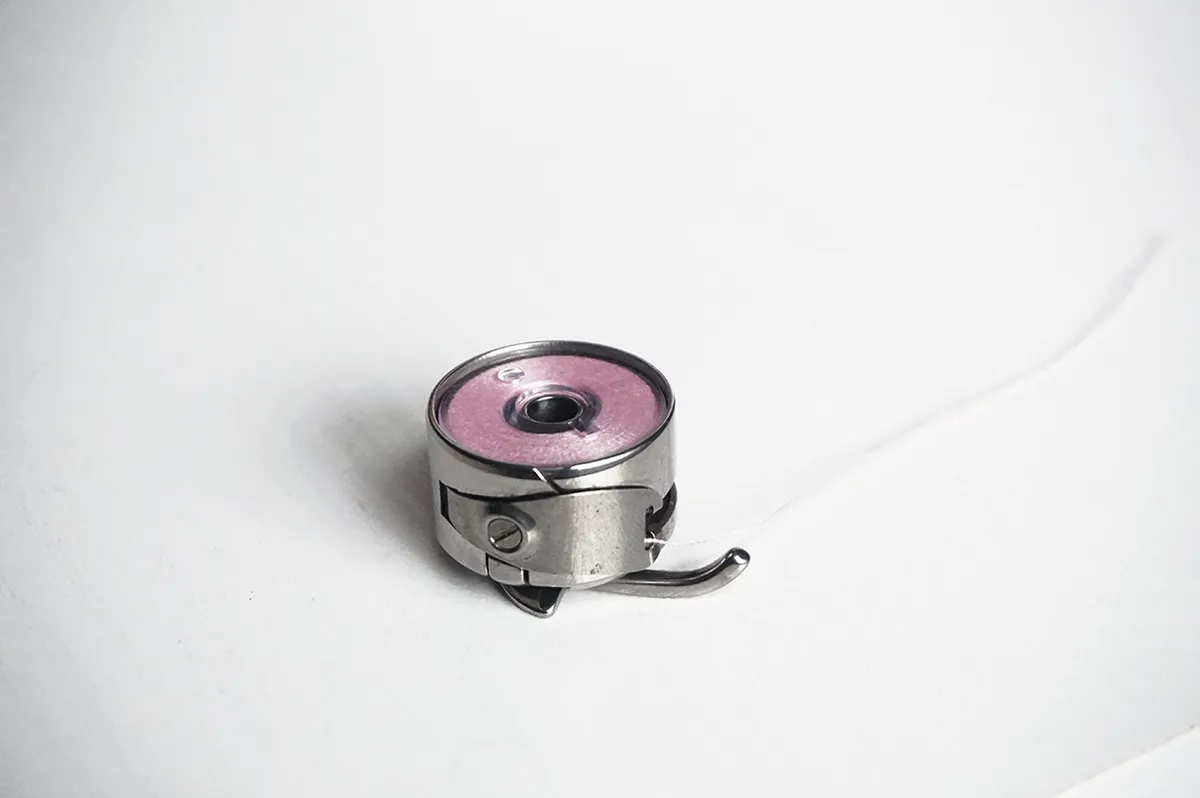
Sewing machine stitches are made up of two separate threads, one from above (from the upper spool thread - we’ll cover that next), the other from below which comes from the bobbin. Your bobbin will be one of two types: front loading, which can be accessed from behind the accessory compartment, or top loading, which can be accessed from the top hatch (on the base plate in front of your needle).
You load thread onto bobbins yourself with the help of your machine. Find out how to do this for both types of bobbin with our full step-by-step picture guide on How to thread a bobbin.
The upper spool thread

The upper spool thread sits on the tip of your sewing machine and provides the thread that comes from above and will go through your needle’s eye. Most machines allow general spools to be used directly on the spool pin, so you do not need to prepare a separate bobbin for your upper thread.
The upper spool thread goes from the pin through a thread guide and is fed through a series of channels and loops before going through the eye of the needle. This helps to control tension and prevent snags and tangles.
The stitch selector
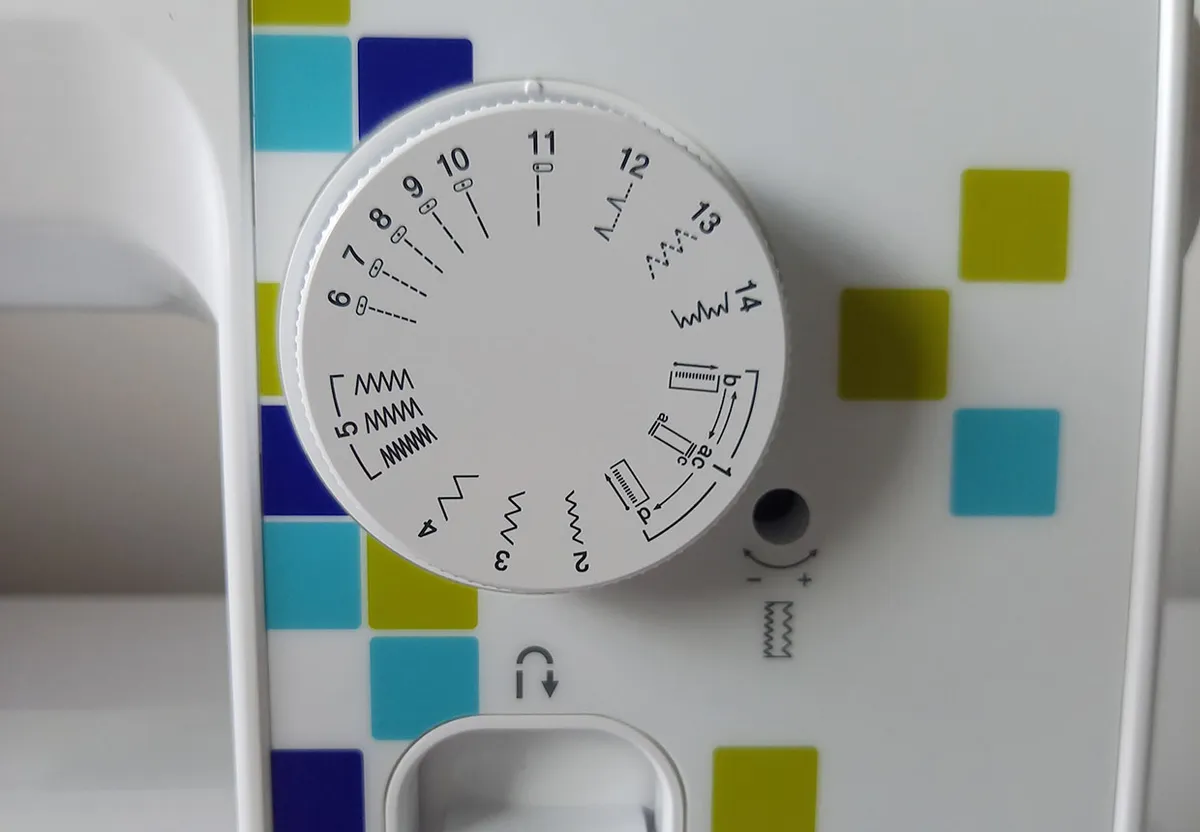
Regardless of how simple or advanced your machine is, they almost always have a few stitches to choose from. A dial, knob, switch or even a screen is used to switch from one stitch to the other, and the majority of modern machines will have a key of the various stitch types printed on the machine.
The positioning and type of stitch selector will vary between machines, but they are on the front of the machine more often than not. You will also often find them close to the reverse switch/button.
The stitch length dial
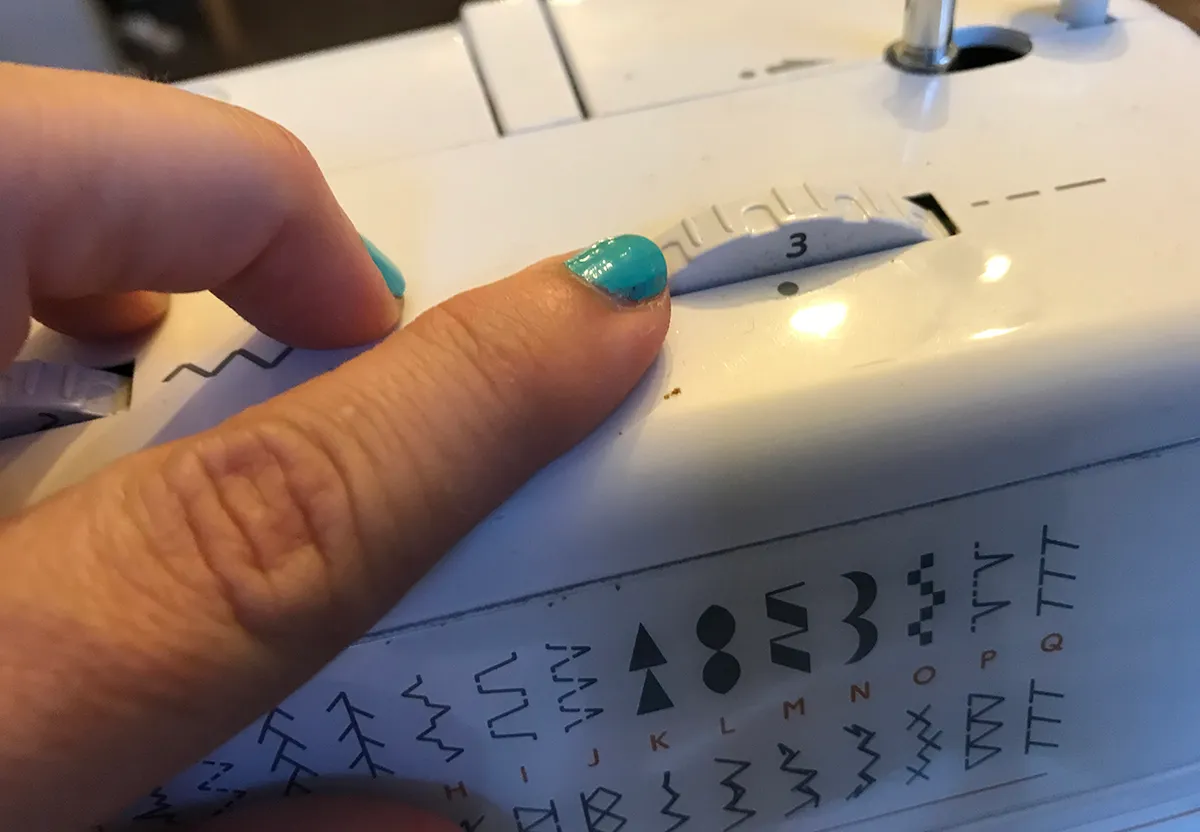
One key element to learn about your machine is the stitch length, which can be adjusted via a dial often positioned on the top of your machine. Stitch lengths can be adjusted for all stitches, so as well as being able to change the length of a simple stitch, when used on a zigzag stitch for example it will extend the angles and how crowded your zigzag will be.
Your machine may also have a stitch width dial, although this function is automatically built into some machines. This controls how much the needle moves from side to side, so is particularly useful for zigzag stitches.
If you are changing the width of your stitch, you need to ensure you have an appropriate sewing machine foot that will be able to accommodate the movements. For straight stitches leave your dial set on zero, but if you are using stitches with different widths it’s wise to practise on a piece of test fabric first to make sure you have your settings correct.
The stitch tension dial
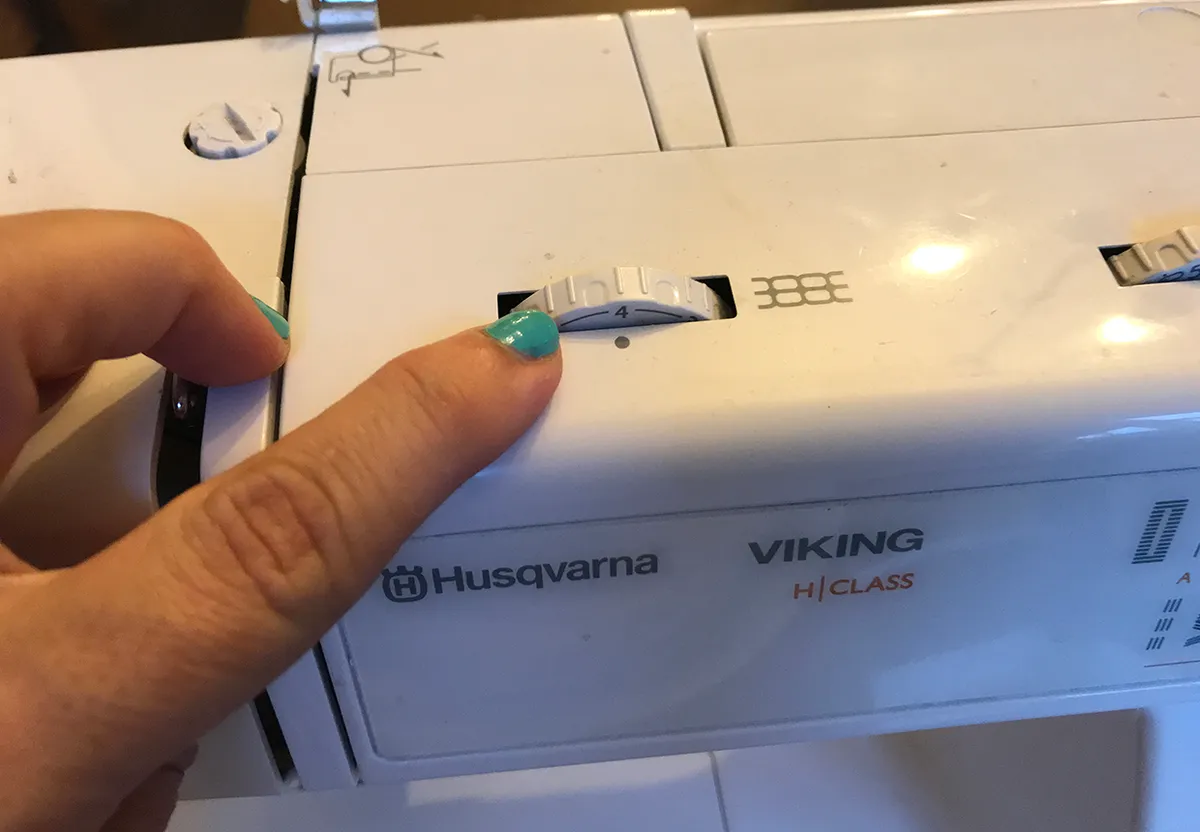
Once you’ve sorted your stitch length and width, next comes your stitch tension. Again, you’ll likely find the dial for this on the top of your manual sewing machine.
The stitch tension dial controls how tight or loose your stitches are, which will be based on the material you’re sewing into. Thick fabrics or multiple layers of fabric will require a different tension than a thin cotton fabric.
The foot pedal

The foot pedal is attached to your sewing machine by a wire that sits on the floor, allowing you to control the speed of your machine with your foot – much like a car accelerator. The more pressure you apply, the faster the machine stitches, and vice versa.
It can take a little while to become accustomed to the sensitivity of your foot pedal, but it’s important to have good control so that you can slow down while going over thicker sections such as bulky seams.
The hand wheel
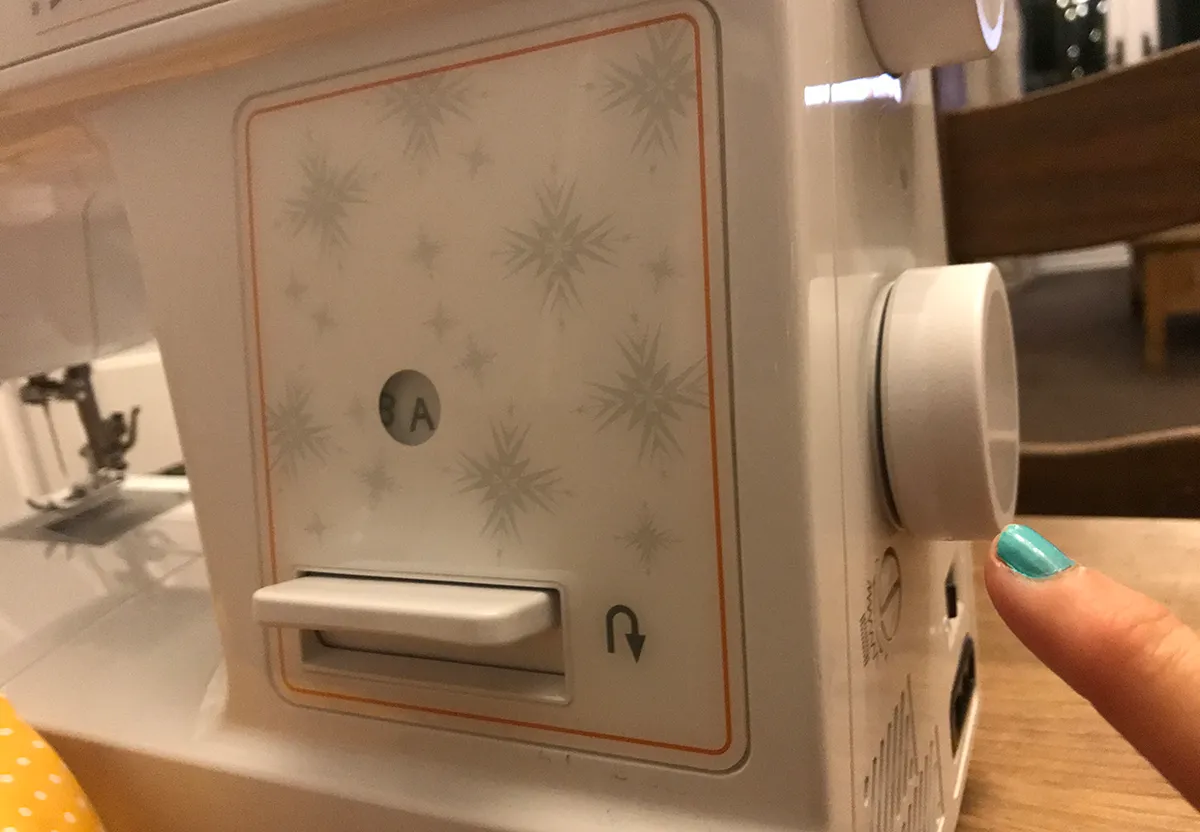
As well as the foot pedal, you can also use the hand wheel to manually raise/lower your needle and complete stitches. This is essential for completing stitches in tight spots or corners where the foot pedal would be too fast to do with precision.
It’s also used to raise the needle into the ‘up’ position for threading the needle or removing fabric, or into the ‘down’ position to keep the fabric in position while you alter the sewing direction.
How to set up your sewing machine
Now that you know the anatomy of your sewing machine, you’re ready to set it up and take it for that first test drive! However, not every machine is exactly the same, so you’ll need to have a good read through the instruction manual to find the specifics for your machine. However, all machines will need to go through the following procedures:
Insert your needle

Most sewing machines will normally come with a needle already inserted, but if not it’s easy to place one in yourself. There is often a small screw that you can turn which clamps your needle into place, so you just simply use the handwheel to raise your needle mechanism to the ‘up’ position, push the non-pointed end of the needle up into the hole below this screw, then turn the screw to lock it in place.
Wind and insert your bobbin
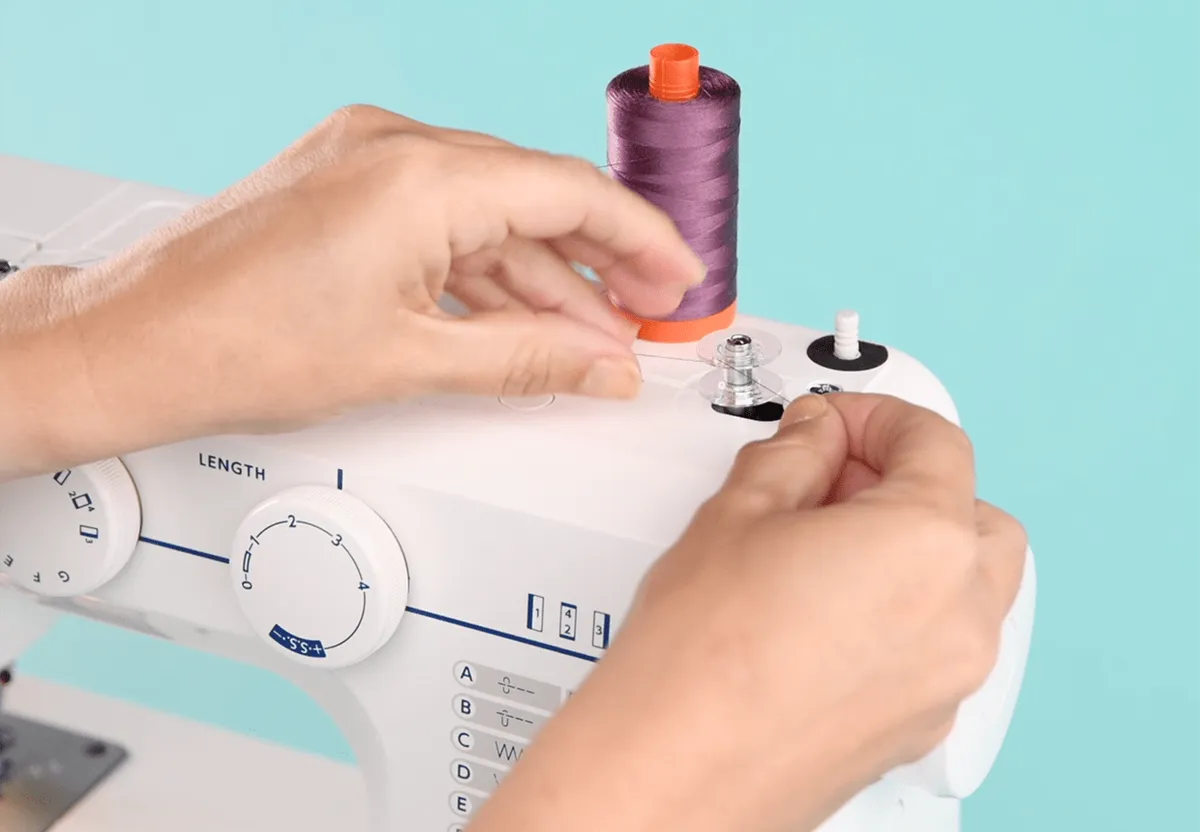
Regardless of if you have a side loading or top loading bobbin sewing machine, you first need to take out your empty bobbin from its metal case and load it with thread. You load your bobbin with the help of your machine, normally by placing it on top (or occasionally on the side) on a special loading pin and using the foot pedal to rotate the pin. Each machine is slightly different, so it’s best to consult your manual as well as reading our guide on how to thread a bobbin.
Thread your machine

Now you need to thread your machine, connecting the thread from your spool pin all the way down to your needle. As you might expect this can differ between machines, but it’s essentially the same process despite the variations and you can see step-by-step pictures of the whole process in our How to use a sewing machine guide
The spool pin thread is first pulled across and around the thread guide (normally a circular button-style disc on the top of your machine). It will then usually go through another guide (indicated by your manual) before being looped around the ‘take-up’ lever – you will need to use your hand wheel to position this upwards so you can access this.
Next, it goes down a channel towards the needle, where it is threaded through a guide next to the needle. Finally it is threaded through the eye of the needle, going from front to back (and using the hand wheel to position in the ‘up’ position). Then you just pull the thread through the two forks of the sewing machine foot, taking the thread under and to the back of the machine.
Bring up the bobbin thread
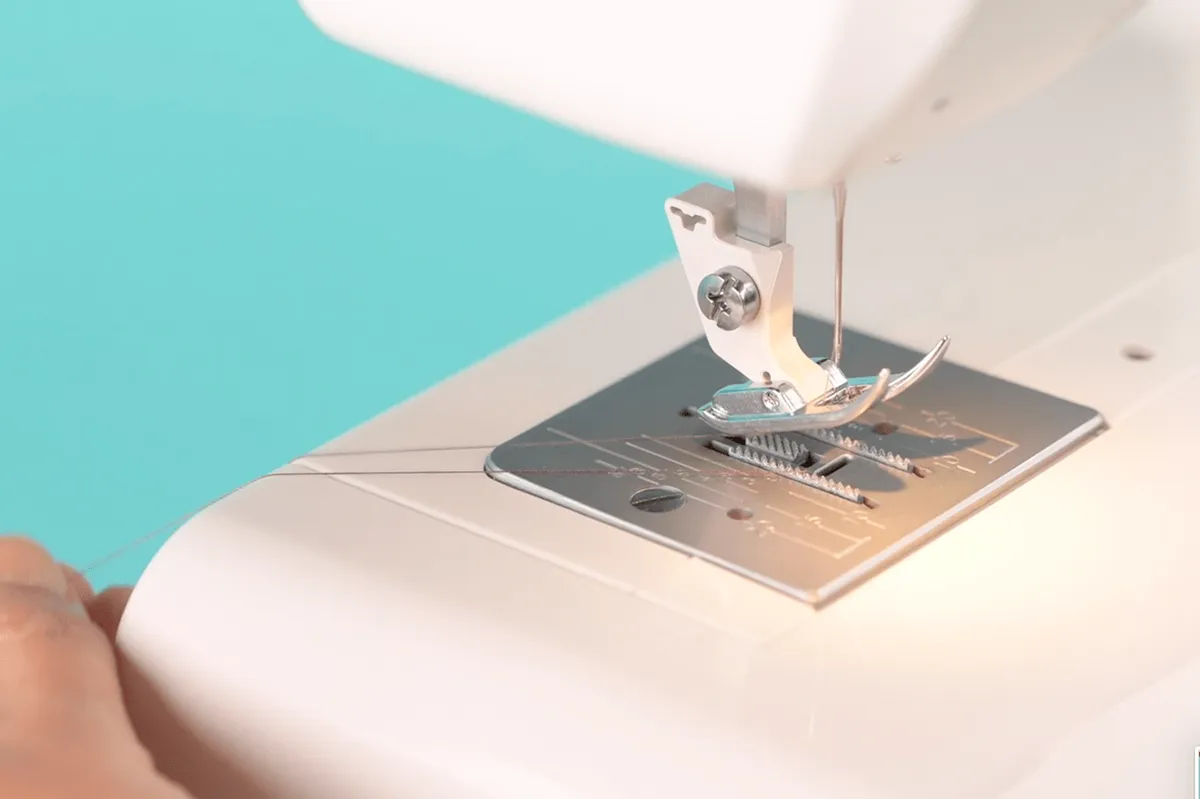
Finally, now that the top thread is set up, you need to bring up the thread from the bobbin in the bottom of the machine. Slowly turn the hand wheel one rotation so that the needle goes down and back up again.
When your needle went down it would have hooked the bobbin thread, so you should now be able to see a loop popping out from the base plate of the machine. Pull this loop out revealing the end of the thread and pull to the back of the machine so that you have two threads – your bobbin thread and top spool thread.
Then you’re ready to start stitching! You can find more information on all these steps as well as handy pictures in our How to use a sewing machine guide.
Buying your first sewing machine
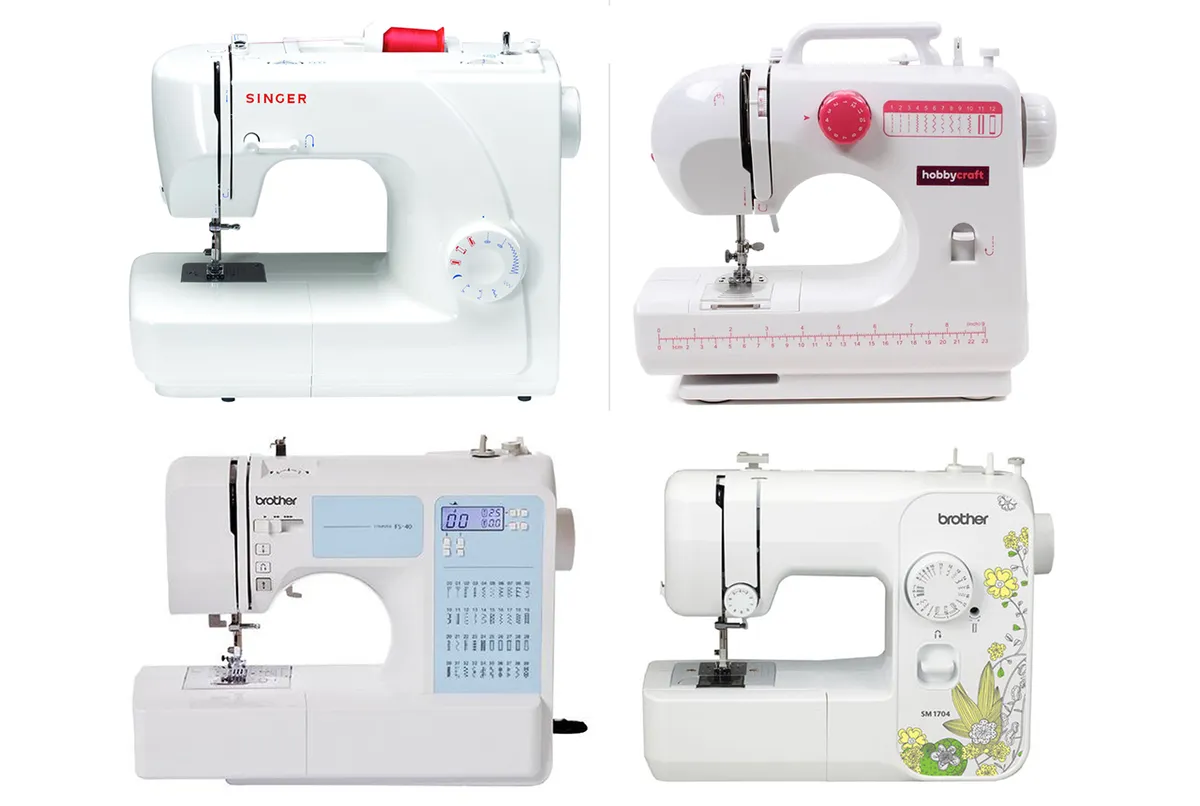
Now that you really know your stuff, it’s time to start shopping around! It’s important to do your research when buying your first sewing machine, and you might find it helpful to write a list of which features are most important for you.
Take the time to shop around as prices can vary and bargains can be had, especially when retailers are having sales like Black Friday. If you’re looking at splashing out on your machine, look out for ones with warranties (and check the terms and conditions).
To help you find your perfect product, we’ve got a range of guides to help when buying your first sewing machine:
- The best sewing machines for beginners
- The best cheap sewing machines
- The best mini and portable sewing machines
- The best computerised sewing machines
Taking care of your sewing machine
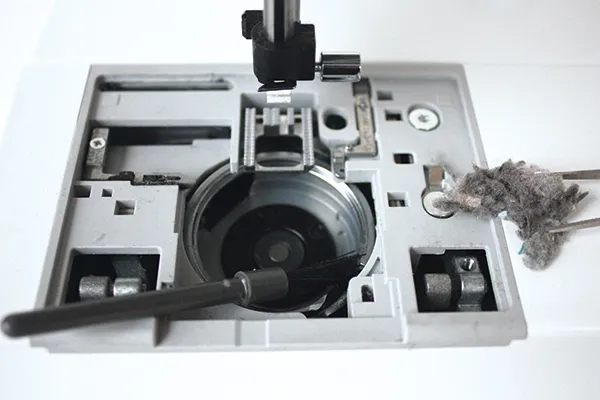
As with any piece of machinery, the better care you take of it the longer it will last for. There are a lot of moving parts and elements that can get caught on a sewing machine, so looking after your machine is not something to be ignored.
By far one of the most important things you can do for your machine is to keep it dust free. If you let it, dust will accumulate and clog up mechanisms, which will cause your machine to run less smoothly (or possibly stop working altogether) and can lead to your thread or fabrics getting snagged or dirty.
The simplest thing you can do to prevent this is to get a decent cover. Sometimes a cover is supplied with the machine, but these can be a bit flimsy, so it’s worth getting a good quality one that stops dust getting in altogether. But you don’t have to spend even more money, in fact you can make one for your first sewing project by learning how to Craft your own sewing machine cover with Gathered.
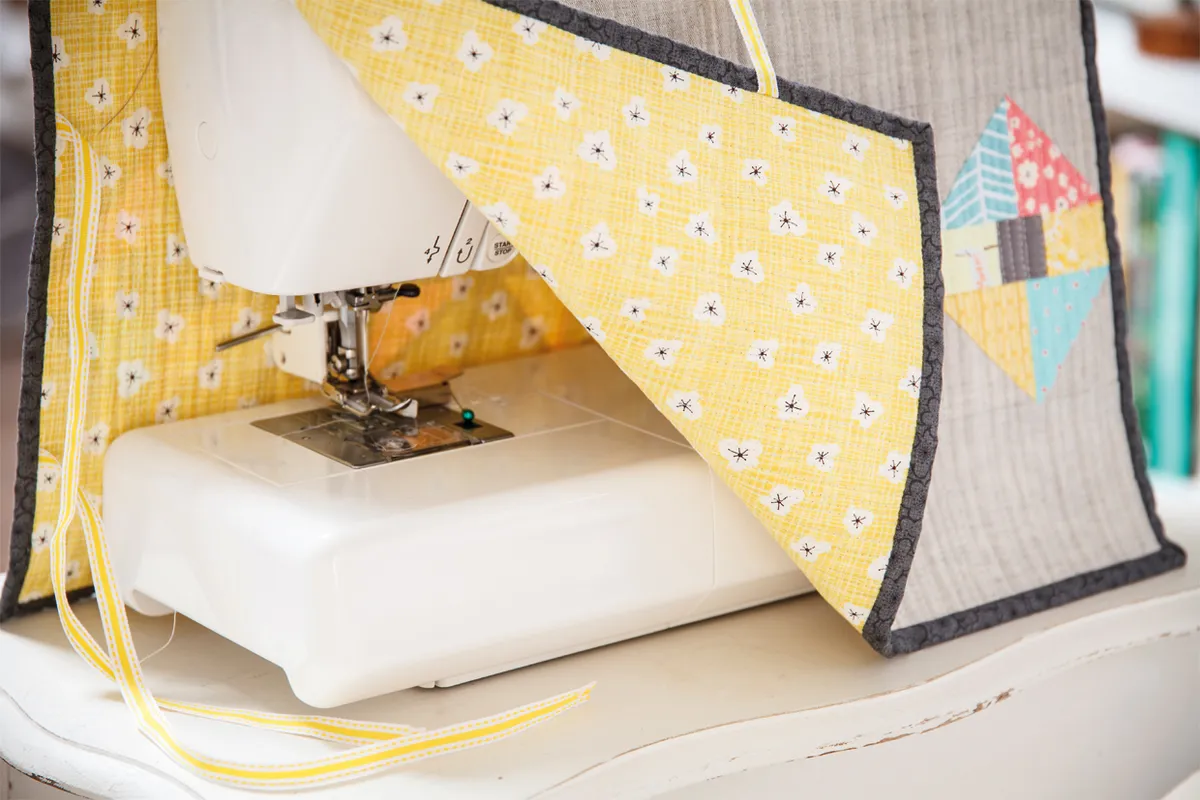
Even if you keep your machine well-covered, dust and fibres will still get on your machine from your fabrics. It’s important to remove lint as often as possible, and this is most easily done with the help of a micro-fibre brush.
It’s also important to oil your machine as and when it needs it. This will help to keep your machine running smoothly and your manual should give you instructions on how to oil your sewing machine correctly.
Don’t forget to change your needles too! While your machine may seem fine, if you’ve been using the same needle for a fair length of time it will inevitably start to wear down and not be quite as sharp as it was, meaning your machine has to work harder and has more resistance when pushing it through the fabric.
It’s good practice to always start with a fresh bobbin, and one that is recommended for your machine. Never try and load more than one thread onto a single bobbin – it may seem like a time-saving trick but it actually means you have more tails that have the potential to get caught. Trust us, fixing a jam in the bobbin section of your machine is no fun at all!

While it may seem like a hassle, getting your sewing machine serviced regularly is definitely worth it in the long run! They’ll be able to check the timing and tension of the machine to ensure it’s running smoothly, as well as replacing any parts that might have got damaged or worn down. They’ll also be able to clean parts of your machine that you aren’t able to access yourself.
Finally, if your machine is ever acting strangely or not quite working how it should, it’s worth checking the troubleshooting tips in your manual.
Editor of Simply Sewing Charlie Moorby has a detailed guide on how to clean your sewing machine which you can check out on Gathered now.
Stock up on sewing supplies
Make sure you have all of the kit you need to get the most out of your hobby with Gathered's sewing tools guide.
Where to put your sewing machine
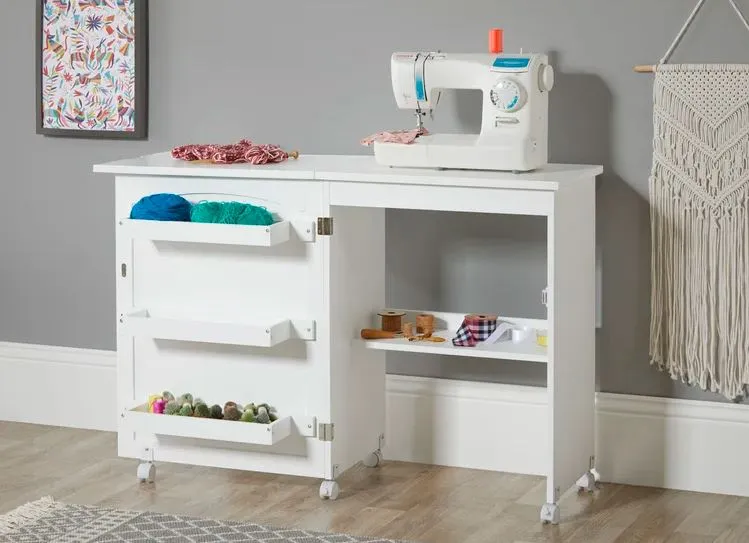
Once you’ve decided what you require from a sewing machine, the next thing you need to think about is where you’re going to put it! Are you going to have a dedicated sewing area, or are you going to be storing it away when not in use? If you’re considering the latter, then the weight and portability of your machine are going to be important factors for you.
If you have the space to spare then it really is worth creating a dedicated area for your machine, as if you’re using it on your dining table it’ll quickly get tedious having to put it away everytime you want to eat! It may be that it’s worth setting up yourself a dedicated craft room or corner, or seeing as the best sewing machine tables can double as desks you could always make it an addition to your home office.
If you’re really going pro with your sewing and investing in heavy duty machines, you may soon find that they’re simply too large and cumbersome to use or store at home. You might want to look into hiring office or studio space as a more convenient way to house your machines.
Why would I need a heavy-duty sewing machine?
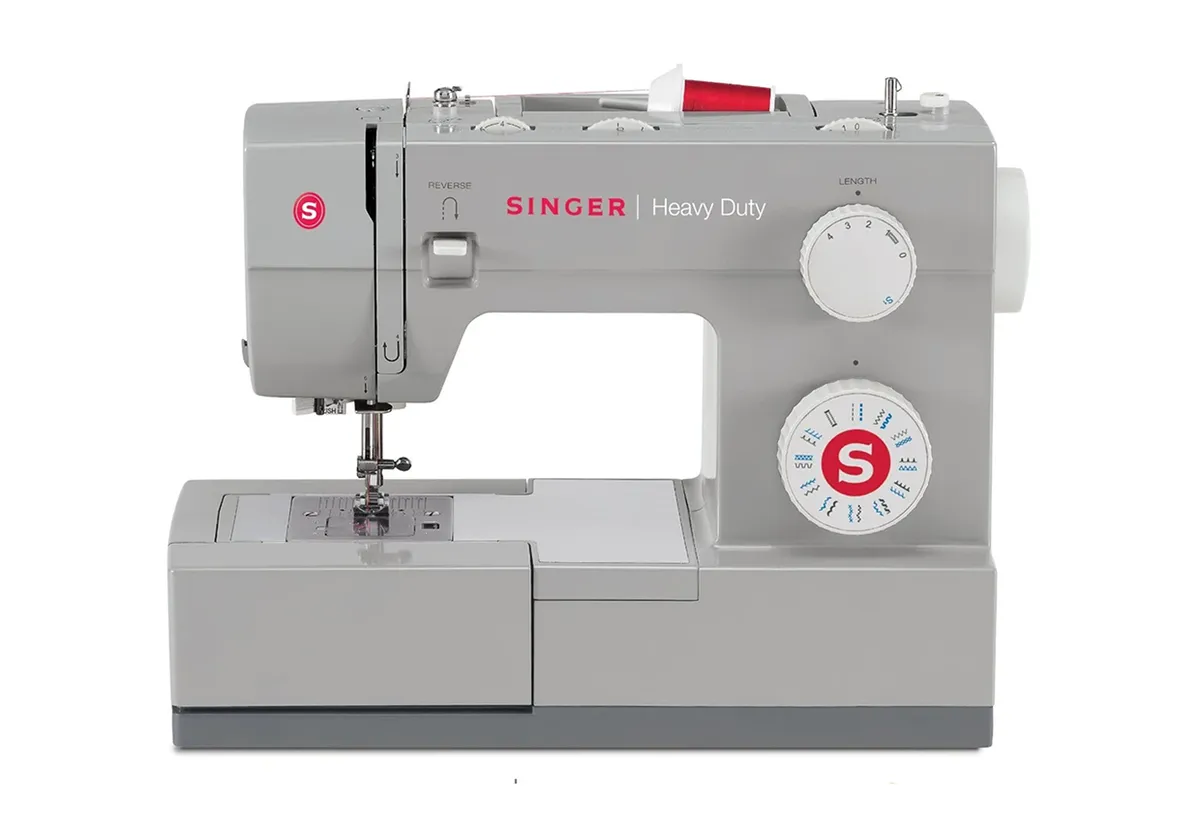
Heavier duty sewing machines can work through thicker fabrics, making them preferable for quilters. They’re also an option for if you want to use thick specialist fabrics such as leather or denim that your average domestic sewing machine would struggle with.
Sometimes the best sewing machines for heavy duty stitching require a custom-built table which can make your crafting easier. Some machines are even so big that they won’t fit on a table – Long arm quilting machines are so massive they need a whole room of their own!
The more advanced you get with your projects the more functions (or machines) you may require, especially so for if you’re operating a business. Not every home crafter will need an air-threading overlocker or multi-needle digital embroidery machine, but choosing to invest in the right machine at the start of your journey can save you time and money when you discover limitations later down the line.
What’s the difference between heavy duty and industrial sewing machines?
It’s a bit confusing at times, but your industrial sewing machine is probably going to be heavy duty, however your heavy duty sewing machine may not necessarily be an industrial sewing machine.
Essentially, industrial sewing machines are ones that have been produced for professional sewers, specifically built to last longer and handle tougher jobs, as well as being able to run for longer. An industrial sewing machine may even be dedicated to just a single function or for working with a specific material. They’re often considerably heavier than your standard machines, and as you’d expect come with a significantly higher price tag – take a look at some of the options in our pick of the best industrial sewing machines.
Of course, not every crafter needs a heavy duty or industrial sewing machine, especially kids that are getting into craft for the first time. Luckily there are ranges out there that take this into account.
Get little ones stitching!
If you’re looking for some hand-sewn projects for little ones to try before you treat them to a machine, check out our pick of the best sewing kits for kids.
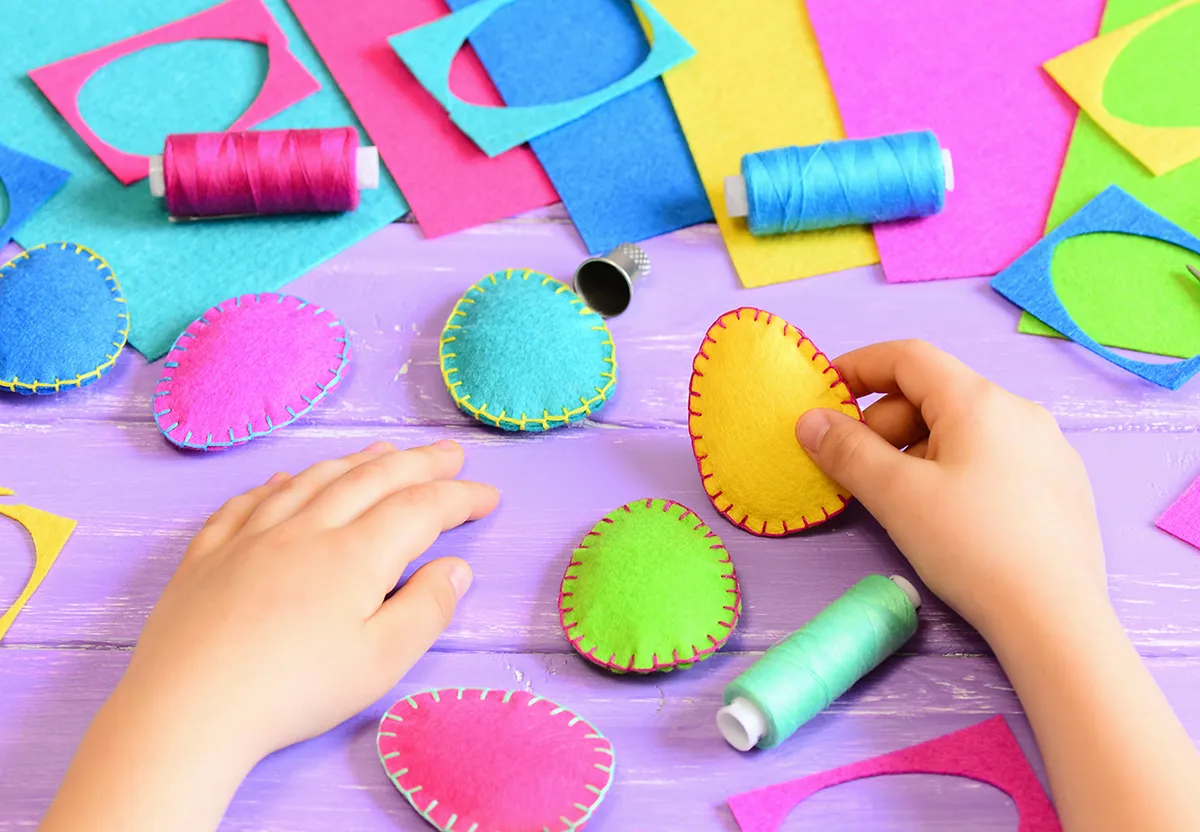
The best sewing machines for kids

If you’re on the lookout for the best sewing machine for a child, your search criteria are going to be slightly different than if you were looking for yourself. Generally speaking, you want to consider the following:
What’s the stitch range?
As with adult machines, even the best sewing machines for kids can have a range of different functions. Some may just focus on the absolute basics, allowing your child to just enjoy learning how to sew, whereas others will come with a range of stitches similar to many adult machines.
It’s worth taking the age of your child and their abilities into account. For example, lots of stitches may confuse little children whereas older kids might quickly get bored with simpler machines.
How is the machine designed?

Some sewing machines are quite clearly designed and marketed at children, with brightly coloured plastic and enticing packaging. But as always, it’s important to look beyond the marketing. A plain machine may be in a similar price range but have a lot more features and much better build quality.
A conventional domestic sewing machine may be a bit large for little children, whereas a machine specifically designed for kids is more likely to be on a smaller and more appropriate scale.
What’s the price?
That classic question! It goes without saying that the cheapest option isn’t always the best option – sometimes it’s worth paying that little bit extra for a better machine. However, remember who you’re buying the machine for too. You don’t want to splash out on a branded machine with loads of functions only for your child to get bored or confused by it.
How suitable is it for children?
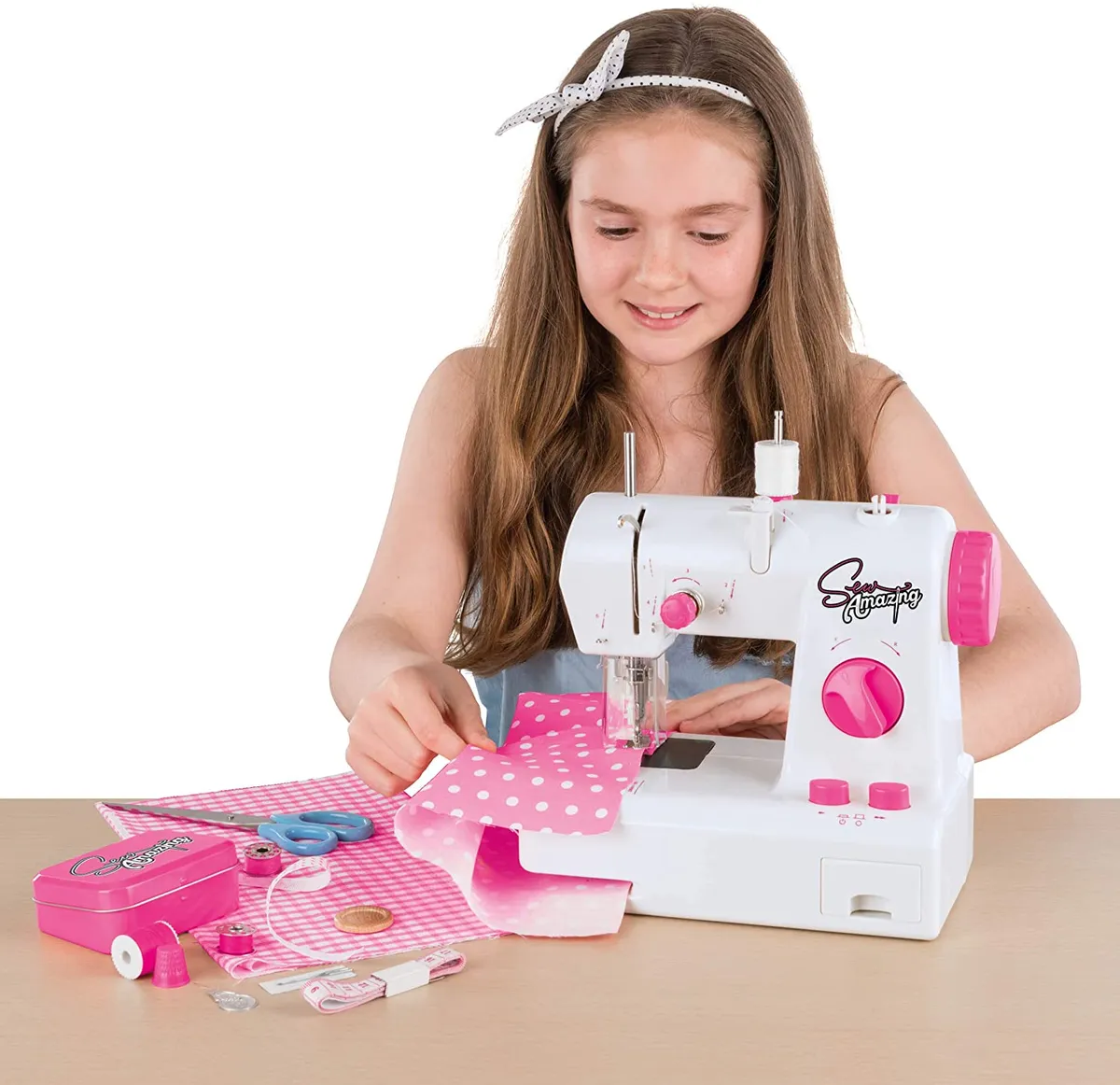
While older kids and teens might be able to get to grips with a standard domestic sewing machine, they’re going to be too confusing for younger children – Even adults can find threading the machine a little fiddly at times!
If you’re looking at buying a sewing machine for a young child, consider getting a machine that has been specifically designed to make things easier for them. Some children’s sewing machines make elements like the bobbin loading and even the needle threading much simpler. The size of the machine also makes a difference, as machines designed for kids will be slightly smaller making them more manageable for little ones.
What are the safety features?
The most important factor is of course your child’s safety. Fortunately many children’s sewing machines are made with this in mind and come with extra safety features that you wouldn’t find on a standard sewing machine. Many come with finger guards to protect little hands safely away from the needle mechanism, although this is only really needed for young children.
You may also find some kid’s sewing machines that come with a slider that controls the speed rather than a foot pedal, meaning less risk of slipping and going too fast with the pedal. Many machines designed for kids are also more self-contained with less of the mechanisms exposed.
Roisin McKenna has more on this in Gathered’s expert guide to the best sewing machines for kids, which includes some pattern ideas to get them started.
Specialist scissors
Every sewer needs a good pair of scissors! It’s important to choose the right type and to look after them properly. Find out everything you need to know in our guide to sewing scissors.
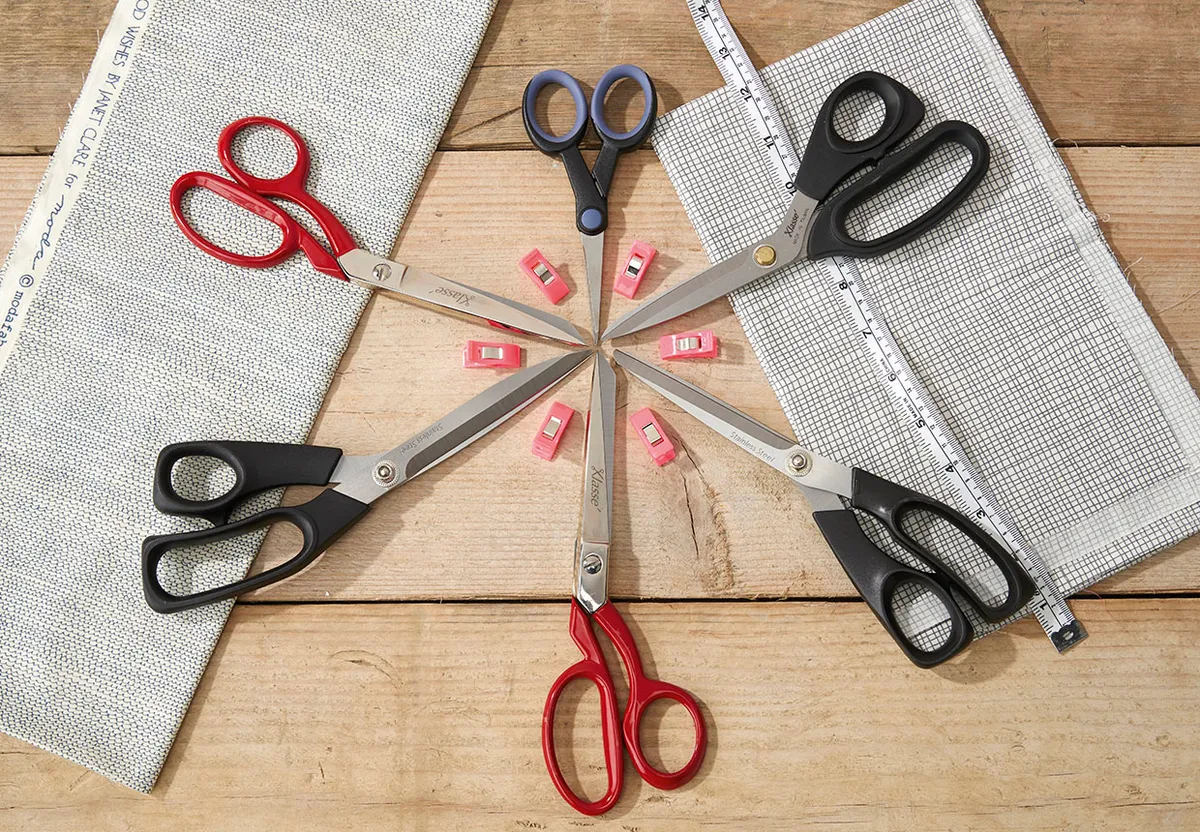
Why trust Gathered?
Gathered is proud to be the home of some of the UK's leading craft brands, including Simply Sewing, Today's Quilter, and Love Patchwork & Quilting. Our editorial teams are deeply ingrained in the craft community, offering expert advice with decades of craft publishing experience.
All the sewing machines recommended in this list underwent vigorous testing to bring you accurate and reliable reviews.
The team at Gathered draw upon our expert resources to curate the best and most up-to-date products, ensuring you get the most reliable information to fuel your creativity.
Now for the fun part – get sewing!
Buying your first sewing machine is an exciting time, but it can be a little daunting too. Once you’ve bought your machine, take the time to read the manual properly and start off with a piece of test fabric so that you can try out the different stitches and settings.
When you’ve got the hang of it and have your machine all set up correctly, then you can delve into the exciting world of sewing projects.
Find your first sewing project
Whether you’re ready to get started on your first project or just want to get inspired before buying your first machine, check out the best sewing patterns for beginners with Gathered.
